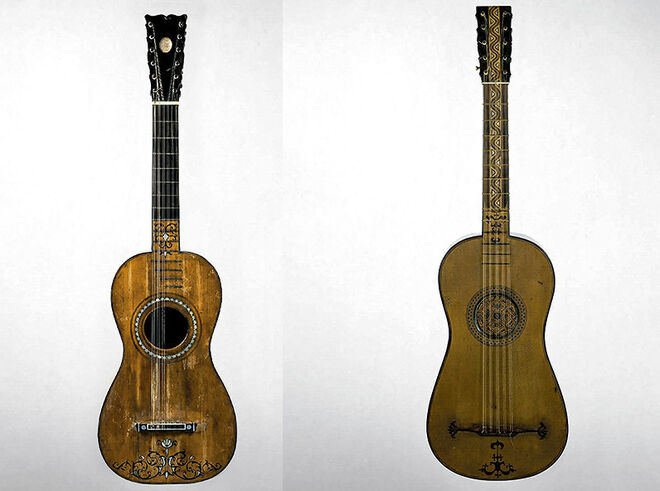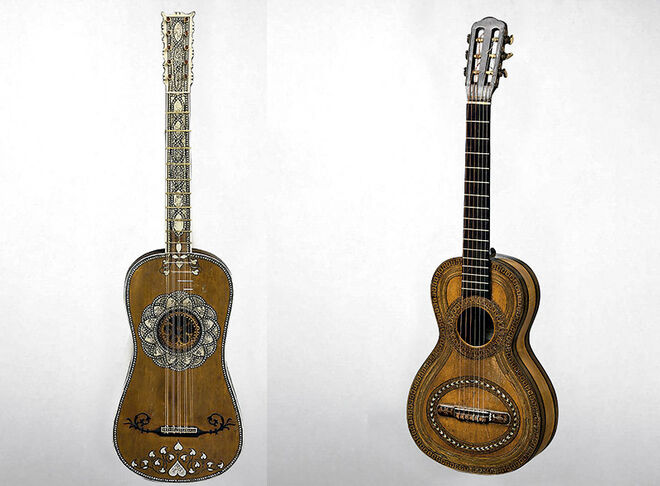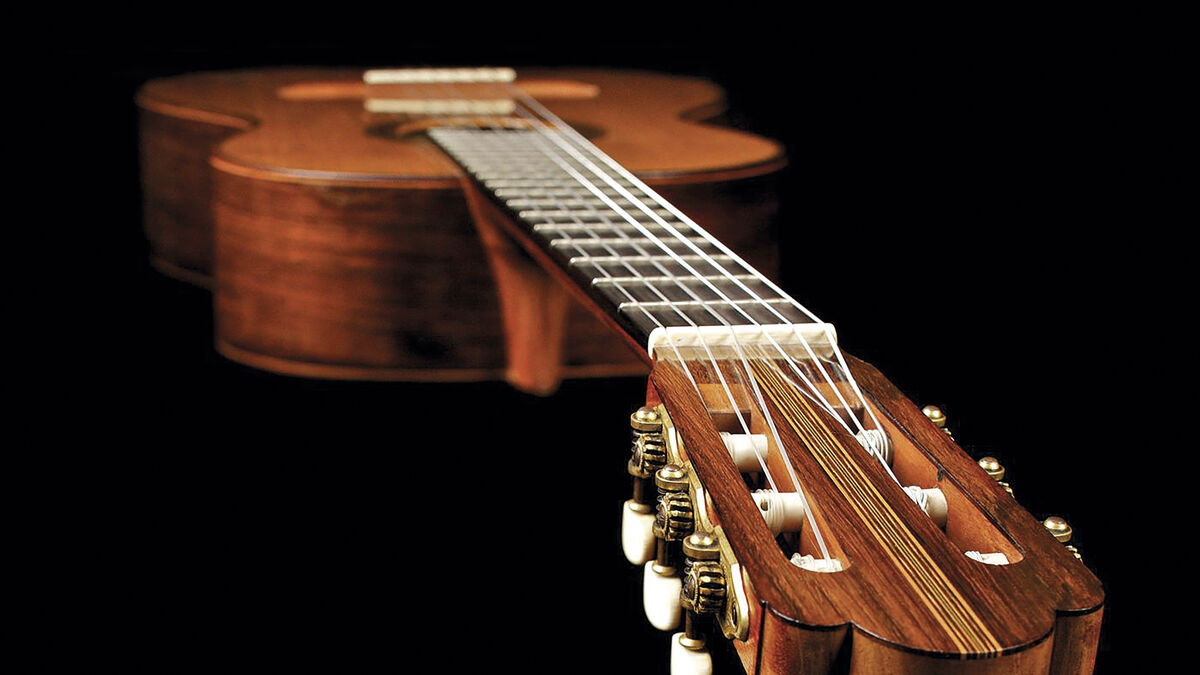The term ‘Spanish guitar’ has been used differently over the centuries in different countries. Today it is often used interchangeably with the term classical guitar, and is not limited to instruments made in Spain. Daniel Wheeldon, Curator of the Department of Musical Instruments at the Metropolitan Museum of New York (MET) points out that the recorded history of the guitar begins in the Renaissance, dating the oldest written sources to the 14th century. The guitar emerged in Europe accompanying musical traditions from the Arab world, along with instruments such as the lute and the viola.

In the image, from left to right, design of Josep Benedid (1787). Transitional, flamed maple back and sides, spruce top with mother-of-pearl and mahogany inlays and guitar made by José Massagué (1755-50), with pine top, back and sides of maple, rosewood, ivory walnut, rosewood, mastic, and decoration inlaid with mother-of-pearl.
The MET preserves one of the most dazzling and valuable collections of Spanish guitars in the world. After some lengthy and time-consuming restoration work, the Museum reopened its doors last May, and it is again possible to admire this guitar collection that traces morphology and evolution of an instrument through which the sound of history can be heard.


In the image, from left to right, guitar attributed to Matteo Sellas (1630-50), German, died in Venice. Made of fir, bone, parchment, snake wood, ivory. Beside him, a work of Pedro Fuentes (1797), in which the decoration features the recurring image of a squirrel holding an acorn and the bridge is surrounded by a broad-band ellipse with a central ebony and mother-of-pearl herringbone pattern.
In the 16th century, the guitar in most of Europe had four double strings. The music for guitar published in Spain during that period is among works for other instruments, and thus a section dedicated to the guitar is included in the book ‘Declaration of Musical Instruments’ (1555), by Juan Bermudo. The fifth row was introduced in the late 16th century, which was recognized as a Spanish invention. The 18th century Spanish guitar increased in size, with a wider and deeper body, although later this body shape would change and Spanish guitar makers were once again at the forefront of design innovation. The main function of the guitar in Spain during the 18th century was to facilitate national dance music.


In the image, from left to right, it belonged to Andres Segovia (1912). The two-piece back is made of Brazilian rosewood, and the two pieces of the top are made of spruce. Beside him, design by Christian Frederick Martin (1867), German brought to the US, Martin’s guitar features many Spanish elements, including the body profile and slotted headstock.
Beginning in the early 19th century, six-string guitars, with pairs of strings in unison, began to give way to six-string guitars. There was great fondness for Spanish guitar music throughout the 19th century, and a growing demand for its use in concert halls with works by Sor, Paganini or Berlioz. Antonio Torres, Pedro Fuentes, the legendary Ramírez brothers and their manager, Santos Hernández, as well as the German Hermann Hauser, already in the 1920s, are famous names in an activity that maintains in its legacy a legend that unites craftsmanship, history and art, and which finds an excellent continuity in our days.
–


